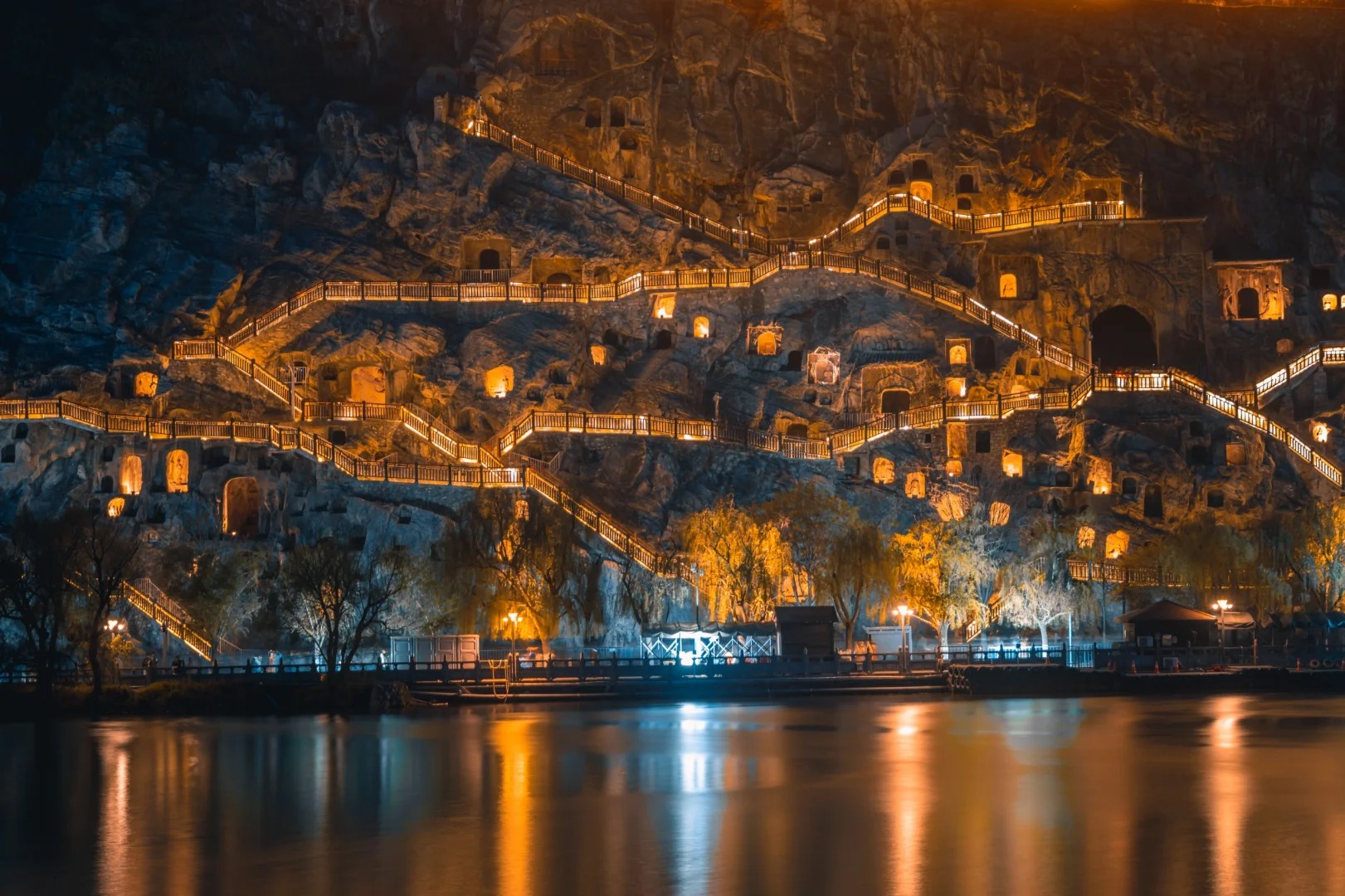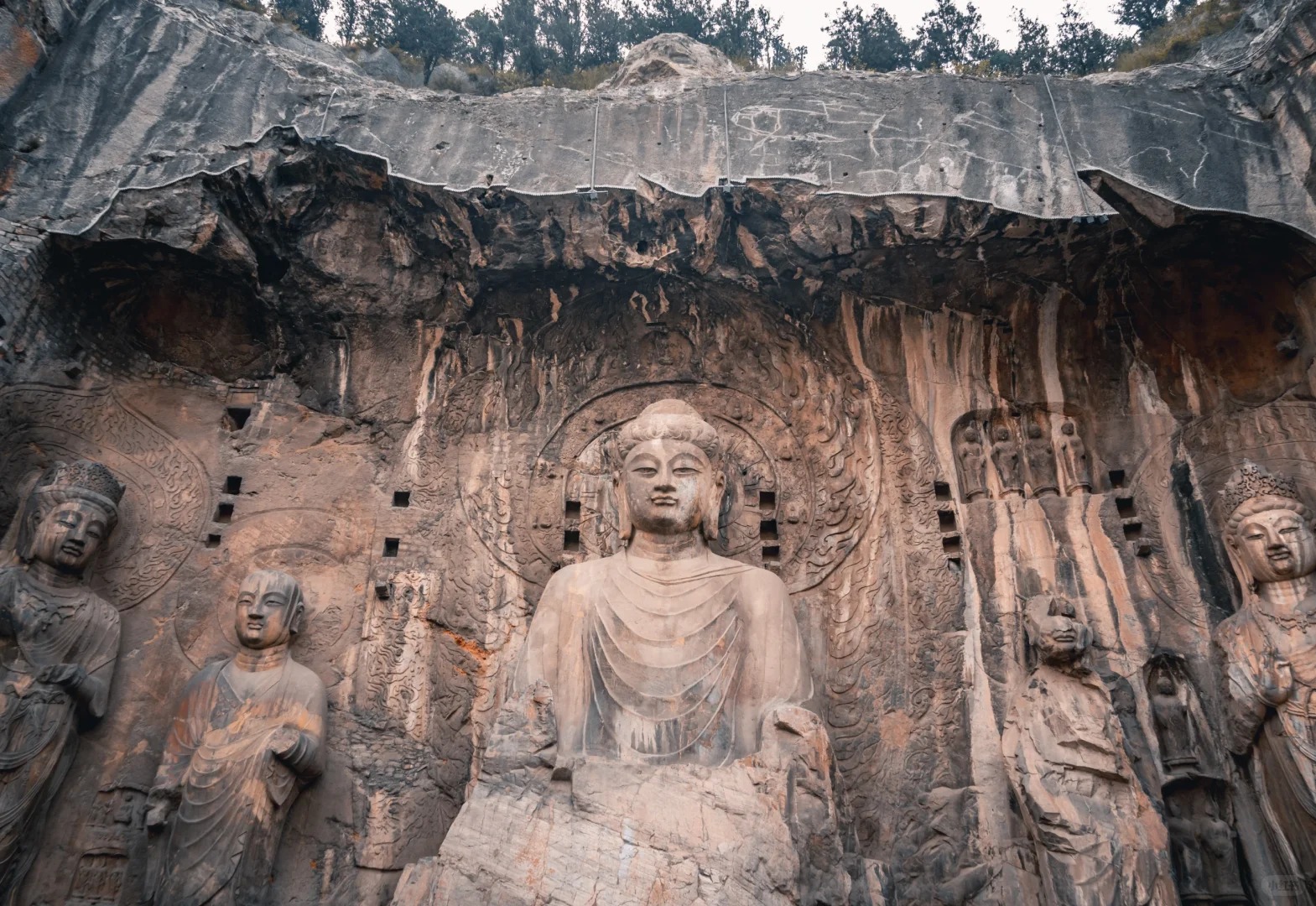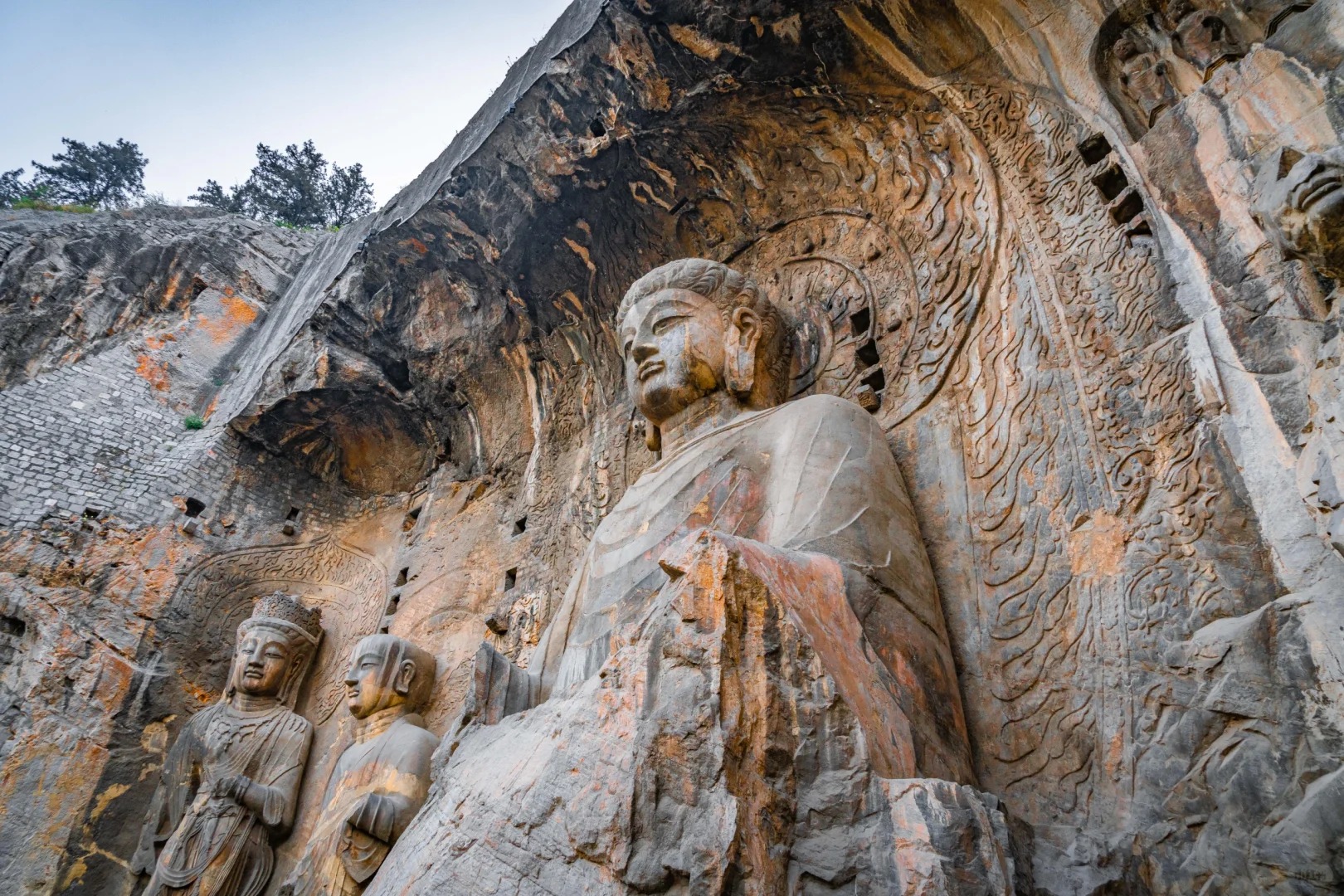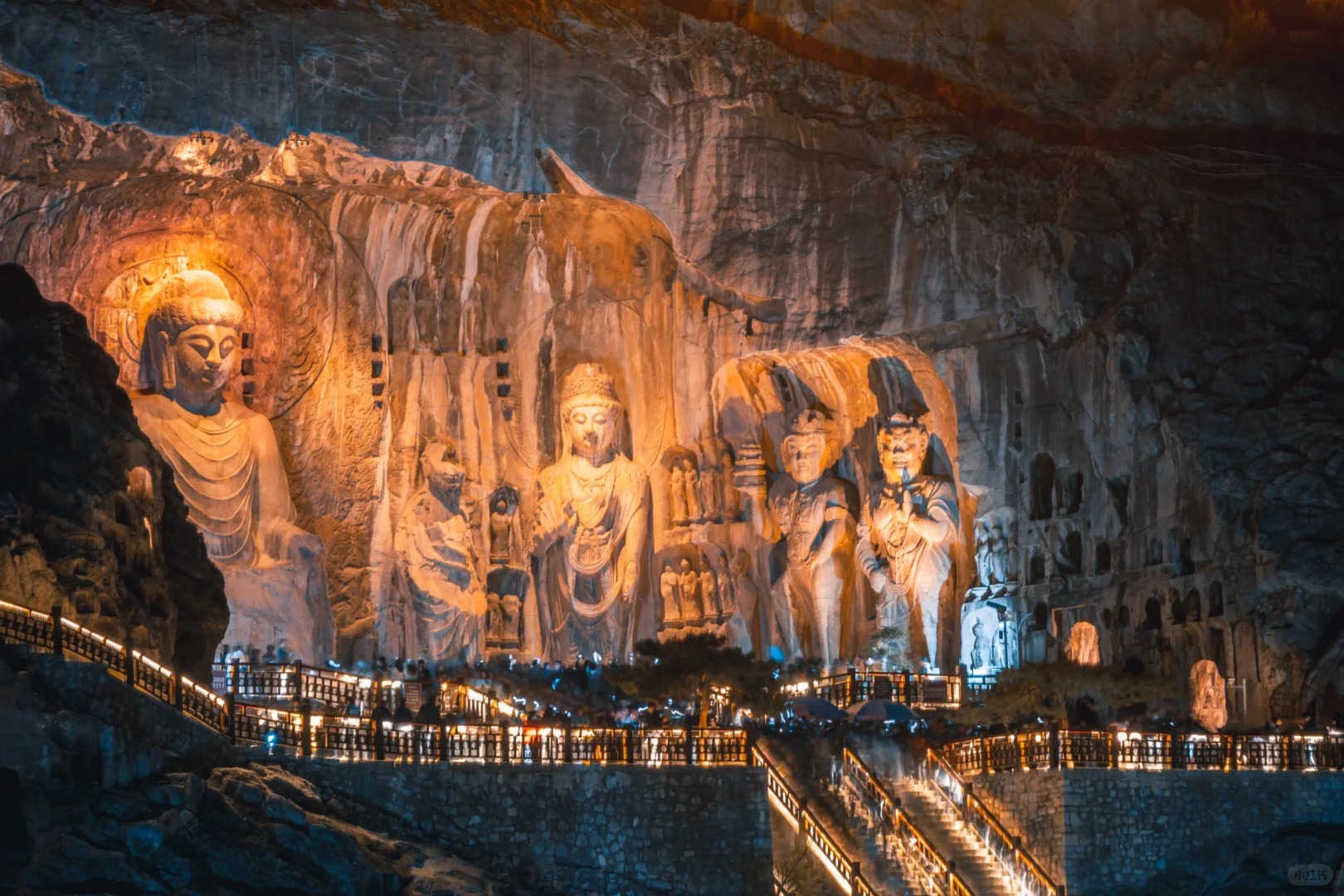Visiting Information
| Information | Details |
|---|---|
| Chinese Name | 龙门石窟 (Lóngmén Shíkū) |
| Location and Address | 12 Longmen Avenue, Luolong District, Luoyang City, Henan Province, China |
| Opening Time/Hours | February to November: 7:00 AM – 7:00 PM December to January: 7:30 AM – 6:00 PM |
| Entrance Fee | 120 CNY (March to November) 100 CNY (December to February) Additional 60 CNY for night tour (when available) |
| How to Get There | By Bus: Take bus 53, 60, 66, 81, or Tourist Bus 1, 2 to Longmen Grottoes By Taxi: About 30-minute ride from Luoyang city center (No metro service available in Luoyang) |
| Best Time for Visit | April to October for pleasant weather; early morning or late afternoon for fewer crowds |
| Contact Info | Tel: +86 379 6596 6088 Email: [email protected] |
Overview
The Longmen Grottoes, also known as Longmen Caves, is a UNESCO World Heritage Site located near Luoyang, Henan Province, China. It is one of the finest examples of Chinese Buddhist art, featuring thousands of statues of Buddha and his disciples carved into limestone cliffs along the Yi River.
Historical Background
The creation of the Longmen Grottoes began in 493 AD during the Northern Wei Dynasty and continued for approximately 400 years through the Tang Dynasty. The site’s development was closely tied to the imperial patronage of Buddhism and reflects the changing styles and influences in Chinese Buddhist art over the centuries.

Architectural Features
- Cave Temples: The Longmen Grottoes consist of over 2,300 caves and niches carved into the limestone cliffs on both sides of the Yi River. These caves vary in size from small niches to large temple grottoes.
- Buddha Statues: The site contains more than 110,000 Buddhist stone statues, ranging from tiny carvings just a few centimeters high to colossal figures over 17 meters tall. The most famous is the Vairocana Buddha in the Fengxian Temple, which stands 17.14 meters high.
- Inscriptions and Steles: Over 60 Buddhist pagodas and more than 2,800 inscribed steles are found throughout the grottoes, providing valuable historical and artistic information.
- Fengxian Temple: This is the largest and most impressive grotto at Longmen, created during the Tang Dynasty. It houses some of the most refined examples of Chinese stone carving, including the colossal Vairocana Buddha.
Cultural Importance
The Longmen Grottoes are of immense cultural significance as they represent the high point of Chinese stone carving and provide insight into the evolution of Buddhist art in China. The site is a testament to the religious, cultural, and artistic achievements of ancient China and serves as an important resource for studying the history of Chinese Buddhism and art.
Surrounding Attractions
- Xiangshan Temple: Located on the east bank of the Yi River, this ancient Buddhist temple offers a serene atmosphere and beautiful views of the surrounding landscape. It’s a great place to experience traditional Chinese temple architecture and Buddhist culture.
- Baiyuan Garden: This classical Chinese garden is situated near the Longmen Grottoes. It features traditional landscaping, pavilions, and rockeries, providing a peaceful retreat and a glimpse into Chinese garden design.
- White Horse Temple: Located in Luoyang city, about 13 kilometers from Longmen Grottoes, this is considered the first Buddhist temple in China. It offers visitors a chance to explore more of the region’s rich Buddhist heritage.

Photography Opportunities
- Panoramic Views: The elevated areas around the grottoes offer stunning panoramic views of the entire site, including both banks of the Yi River and the surrounding landscape. These vantage points are perfect for capturing the scale and beauty of the Longmen Grottoes.
- Close-up Details: The intricate carvings and statues provide excellent opportunities for close-up photography. The play of light and shadow on the stone surfaces can create dramatic effects, especially during early morning or late afternoon.
- Night Photography: When night tours are available, the illuminated grottoes offer a unique and magical atmosphere for photography. The lighting accentuates the contours and details of the sculptures, creating a different perspective from daytime views.
Modern Importance
- Cultural Heritage Preservation: The Longmen Grottoes serve as a focal point for efforts in cultural heritage preservation in China. Ongoing research and conservation work at the site contribute to the development of techniques for protecting ancient stone carvings and cave art.
- Tourism and Local Economy: As a major tourist attraction, the Longmen Grottoes play a significant role in the local economy of Luoyang and the surrounding area. The site attracts both domestic and international visitors, contributing to the region’s tourism industry.
- Educational Resource: The grottoes serve as an invaluable educational resource for students, scholars, and art enthusiasts. They provide tangible evidence of China’s artistic and religious history, offering insights into ancient techniques, styles, and cultural practices.

FAQ
- What are the Longmen Grottoes famous for?
The Longmen Grottoes are famous for their extensive collection of Buddhist stone carvings, including over 110,000 statues ranging from tiny to colossal in size. They are renowned for their artistic quality and historical significance in Chinese Buddhist art. - What’s inside the Longmen Grottoes?
Inside the Longmen Grottoes, you’ll find thousands of cave temples and niches carved into limestone cliffs, housing numerous Buddha statues, inscriptions, and steles. The most notable features include the massive Vairocana Buddha in Fengxian Temple and the intricate carvings depicting Buddhist themes and historical figures. - Are the Longmen Grottoes free?
No, the Longmen Grottoes are not free. There is an entrance fee that varies depending on the season, with additional charges for special tours like night visits when available. - Are the Longmen Grottoes worth visiting?
Yes, the Longmen Grottoes are considered highly worth visiting. They offer a unique opportunity to see one of the world’s most impressive collections of Buddhist rock carvings and gain insights into ancient Chinese art and culture. - What to do in the Longmen Grottoes?
At the Longmen Grottoes, you can explore the various cave temples, admire the Buddha statues and intricate carvings, learn about Buddhist art and Chinese history, take photographs, and enjoy the scenic views along the Yi River. Guided tours are available for a more in-depth experience. - How do I get to the Longmen Grottoes in the local city?
In Luoyang, you can reach the Longmen Grottoes by taking bus 53, 60, 66, 81, or Tourist Bus 1 or 2 directly to the Longmen Grottoes stop. Alternatively, you can take a taxi from the city center, which takes about 30 minutes. - How to visit the Longmen Grottoes?
To visit the Longmen Grottoes, purchase tickets at the entrance or book in advance. It’s recommended to allow at least 2-3 hours for your visit. Consider hiring a guide or using an audio guide for a more informative experience. Wear comfortable shoes as there’s a lot of walking involved. Visit early in the morning or late afternoon to avoid crowds and harsh midday sun.



